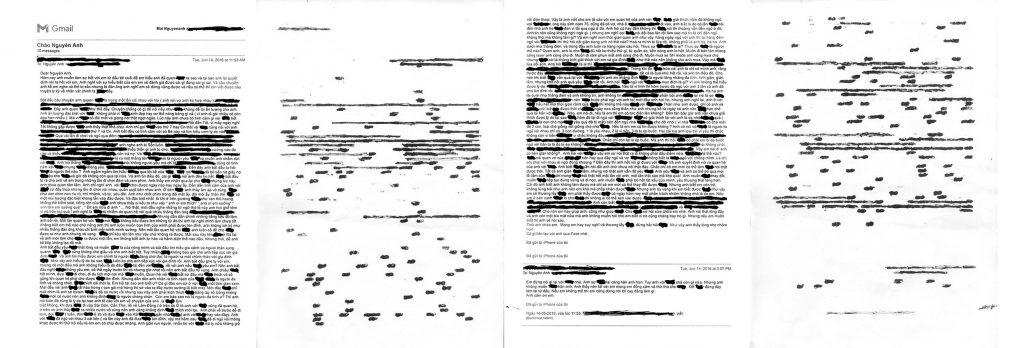(Coming but might not be soon)
Photographs, found objects, videos, sound, embroidery.
In the summer of 2016, I received an email from a stranger. The sender, seemingly a married man in his late 30s, confessed to having an affair with X, my partner. Throughout the message, he poured out his passionate love for her, along with his rage and despair upon discovering that she had been seeing other men besides him. By the end, he reached out, yearning for an empathetic reply that might relieve his burden of guilt. Reading it, I found myself enveloped in a strange mix of anger, curiosity, and an unexpected sense of sympathy for this man. Although I wanted to write back, I couldn’t find the words.
Five years later, still in search of a reply, I began sharing the email with men I encountered in my everyday life, some acquaintances, others complete strangers. Despite hours of intimate conversation, I remained at a loss to truly understand their feelings when faced with emotional pain and betrayal. That’s when I started to wonder: could artificial intelligence ever grasp, let alone articulate, the depth of human emotion? So I fed excerpts from those conversations into generative AI software to see what might emerge. The resulting images were then appropriated and recontextualized.
That Way I Feel More Relieved is an attempt to visually interpret male vulnerability. Through this process, I also try to make sense of my own thoughts and emotions, hoping to arrive at a reply that might bring relief to both the sender and myself.
The final photographs are presented as diptychs alongside the AI-generated images in binary string format.
AI-generated images can be viewed by converting binary code into pixels.






















In confronting the emotional turmoil evoked by the vivid and figurative language detailing each moment the sender shared with my lover, I relied on AI as a tool to construct a visual narrative that addresses both my imagination and curiosity. The resulting AI-generated video recites the content of the original email. By adopting the aesthetic of generic, often emotionless content prevalent across digital platforms, this work is an attempt to communicate my emotional distance from a deeply personal narrative; a distance that has grown through the process of repeatedly sharing and revisiting the email. Through this juxtaposition, I interrogate how technology shapes our personal experiences and emotional responses in an increasingly ocular-centric world. By tapping into a vast database of images, the use of AI reflects the influence of deep-rooted culture and mass media in Vietnam’s social fabric, and serves as a survey of how technology, and by extension our society, makes meaning through images.

That way I feel more relieved, 2024.
Single-channel color video, 10:06 minutes.